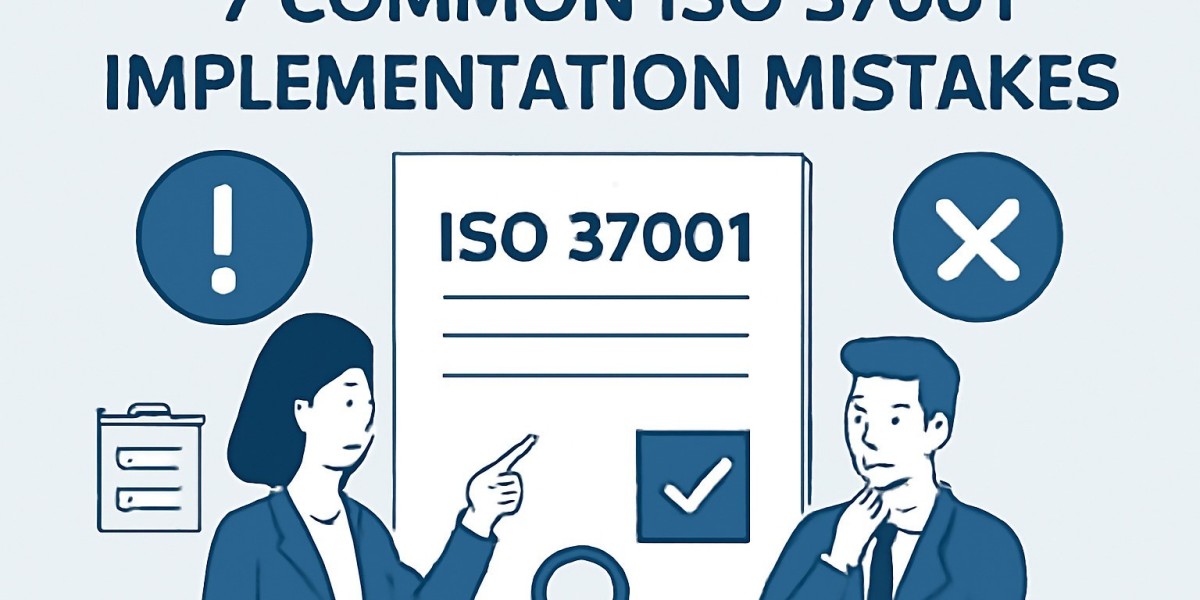ISO 37001 is an international anti-bribery management standard that guides organizations in preventing corruption. Implementing it correctly can strengthen a company’s compliance framework and reputation. However, many organizations stumble into common pitfalls when setting up an ABMS. The following discusses seven frequent implementation mistakes and how to avoid them.
1. Overemphasis on Documentation
It is a common misstep to treat ISO 37001 as a paperwork exercise. Many teams draft lengthy policies and compile an ISO 37001 manual, believing that documentation alone ensures compliance. In reality, written procedures must be put into practice; otherwise gaps remain between policy and behavior.
- Align policies with reality: Ensure each documented procedure is actually followed and updated based on real incidents.
- Involve frontline staff: Have employees help create procedures so documents reflect how work truly happens.
- Keep it lean: Focus on essential policies and update documentation as risks and operations change.
2. Inadequate Risk Assessment
A thorough bribery risk assessment is fundamental to ISO 37001, but some organizations rush this step or treat it as a one-time exercise. Without a full, up-to-date risk analysis, key vulnerabilities remain hidden — for example, bribery threats in certain markets or new ventures might be overlooked.
- Map all risks comprehensively: Include every region, business line, product, and stakeholder that could present bribery risk.
- Update the analysis regularly: Treat risk assessment as an ongoing process (e.g., annual reviews or after major changes).
- Use the results to strengthen controls: Focus resources on high-risk areas (such as extra approvals for certain deals) instead of treating assessment as a checkbox.
3. Weak Leadership Commitment
ISO 37001 demands active support from top management. When executives treat it as a mere checkbox, the program will lack authority. Employees take cues from the top, so a disengaged leadership can undermine the entire anti-bribery effort.
- Secure executive buy-in: Have senior leaders sponsor the program, allocate resources, and communicate its importance to the organization.
- Define clear responsibilities: Assign anti-bribery roles and hold managers accountable for compliance in their areas.
- Lead by example: Encourage leaders to attend training and publicly reinforce ethical standards.
4. Vague or Incomplete Policies
A generic or partial policy can do more harm than good. For example, a policy may simply state “no bribery allowed” without explaining what constitutes a bribe or how to report it. Ambiguous rules force employees to guess the boundaries of compliance, increasing the risk of violations.
- Provide clear guidance: Define bribery, gifts, facilitation payments, conflicts of interest, and other concepts with specific examples.
- Tailor to context: Adapt policies to your industry and locations so guidelines are relevant and enforceable.
- Keep them current: Regularly review and update policies to reflect changes in laws or business activities.
5. Insufficient Training and Awareness
Even the best policies are ineffective if employees do not know about them. A common error is to rely on one-time or generic training. Without continuous education and engagement, staff may forget guidelines or feel disconnected from the anti-bribery culture.
- Provide ongoing, role-based training: Conduct regular sessions for all employees and specialized training for high-risk roles (such as procurement or sales).
- Use interactive methods: Include case studies, quizzes, and discussions to reinforce learning and assess understanding.
- Reinforce messaging: Send reminders through newsletters or posters and refresh training whenever policies or risks change.
6. Overlooking Third-Party Risks
Many bribery incidents occur through agents, suppliers, or joint venture partners. A frequent oversight is to apply ISO 37001 only internally and ignore third-party due diligence. Neglecting to vet and monitor partners means the organization remains exposed to corruption outside its walls.
- Cover third parties in your ABMS: Require anti-bribery commitments from suppliers, agents, and other partners.
- Perform due diligence: Screen new vendors and collaborators for corruption risks before engagement.
- Monitor relationships: Regularly review high-risk third parties and include anti-bribery clauses in contracts.
7. Poor Monitoring and Improvement
Common pitfalls include lacking confidential reporting channels, skipping internal audits, or not acting on audit findings. Without continuous monitoring and improvement, the ABMS becomes a formality that ignores lessons from incidents.
- Establish reporting channels: Provide secure, anonymous ways (hotlines, portals) for staff or stakeholders to report bribery concerns.
- Schedule audits and reviews: Regularly conduct internal audits and management reviews of the anti-bribery system.
- Follow up on issues: Use audit results and incident reports to update controls, policies, and training as needed.
Awareness of these pitfalls will help ensure that an ISO 37001 program truly strengthens compliance. By emphasizing practical controls, strong leadership, clear policies, staff training, and ongoing monitoring, organizations can deter bribery and build a robust anti-bribery culture.








